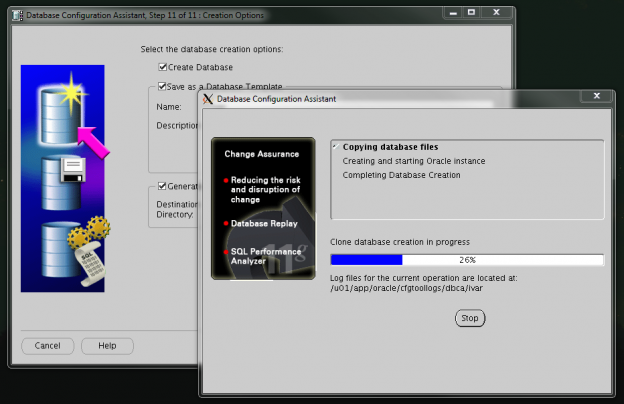Category: Sysadmin
-
Monitor and profile application with Java Mission Control
Monitoring Java applications is can be done with different tools and with JDK you get one good tool for it: Java Mission Control. Java Mission Control and Java Flight Recorder together create a complete tool chain to continuously collect low level and detailed runtime information enabling after-the-fact incident analysis. Starting with Oracle JDK 7 Update…
-
Weblogic 12c and Managed Server in incompatible state
Oracle WebLogic application server (WLS) is quite a behemoth and usually works much better than e.g. OC4J which we previously had to use. But sometimes things don’t go as they should and it gets stuck. Some time ago my managed Server was in “FORCE_SHUTTING_DOWN” state and when trying to restart it I got an error…
-

Windows and X11 forwarding with Xming
Usually I prefer to do thing directly from the Linux terminal but sometimes there is a need for remote graphical tools and X11 forwarding. Linux supports X Forwarding with no extra software, on OS X you need e.g. XQuartz and on Windows you need two pieces of software: a secure shell program (ssh) to establish…
-
Using PHP-FPM with Apache 2 on CentOS
Running Apache 2 and PHP is simple with mod_php but there are more efficient alternatives like using PHP-FPM (FastCGI Process Manager) which is an alternative PHP FastCGI implementation. With it the PHP process runs standalone without the need for a web server and listens for incoming requests on either a TCP or a Unix socket.……
-
Weblogic Server Auto Restart with Node Manager as Linux service
Sometimes servers need to reboot and then it’s nice to have certain services to start automatically. Oracle Weblogic’s Node Manager is one of them and in order to have Node Manager start automatically it must be configured as a daemon. Unfortunately Oracle doesn’t provide init scripts to run it as a Linux service but it’s…
-
Running FishEye & Crucible as a service in Linux
Atlassian’s tools for supporting software development are great but they aren’t really admin friendly to start with. For example FishEye & Crucible doesn’t ship with scripts to start it at system boot time but with the help of Atlassian’s Wiki, sysadmin tasks and scripts you can run it as a normal service.… Jatka lukemista →
-
Using CAcert.org signed certificates for TLS
Setting up Transport Layer Security (TLS), or as previously known as Secure Sockets Layer (SSL), for Apache, Postfix and IMAP like Dovecot is fairly easy. You just need some digital certificates and configuration. If you don’t want to pay for certificates from trusted sources like Thawte or you just don’t need that kind of trust…
-
WordPress mod_rewrite rules taking over mod_status and mod_info
After moving Rule of Tech to a new server and setting up monitoring I noticed that server-status and server-info Apache modules weren’t working as expected. As usual a little bit of Googling solved this problem. The problem was that the .htaccess rules in WordPress were taking over non-existing server-info and server-status urls given in Apache’s…
-
Installing Apache Tomcat 6 on CentOS
CentOS is great substitute for Red Hat Enterprise Linux but is missing some useful packages like Apache Tomcat 6. Installing Apache Tomcat 6 on CentOS 5 from gzip-package is fairly easy. The following guide is at least for CentOS 5.4. Pre-Requirements First you need to install Sun JDK and you can follow the instructions given…
-
Installing Sun JDK 1.6 on CentOS
CentOS doesn’t have a package for Sun JDK so it has to installed manually. It’s fairly easy but there are some steps to do that. This guide has been tested on CentOS 5.4 x64_86. Step 1. Initial setup for building RPM -!- Do this with a non-root user Create ~/.rpmmacros $ vim ~/.rpmmacros… Jatka lukemista…